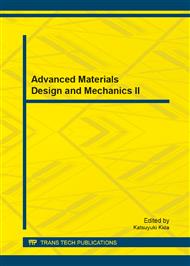p.331
p.336
p.340
p.346
p.350
p.354
p.360
p.364
p.369
Investigation of Performance of Heating and Cooling of Counter Flow Ranque-Hilsch Tubes with L/D=15, 16, 17, 18 for Brass
Abstract:
In this study, heating and cooling performances of counter flow Ranque-Hilsch vortex tubes (RHVTs) were experimentally investigated for brass. The vortex tubes were made of brass. Diameter of vortex tube (D) was 10 mm. Length of vortex tube (L) was 15D, 16D, 17D and18D. The number of nozzles (Nn) was 5. The conical edges of the plugs have a slope of 30o angle. Working pressure of Ranque-Hilsch was 460 kPa (absolute). According to the experimental results, the maximum heating performance of the RHVT system was found to be 39,5 °C at P17 and the maximum cooling performance of the RHVT in this study was found to be-28,6 °C at P18. An increase in fraction of cold flow (ξ) led to a increase in the heating performance.
Info:
Periodical:
Pages:
350-353
Citation:
Online since:
August 2013
Authors:
Keywords:
Price:
Сopyright:
© 2013 Trans Tech Publications Ltd. All Rights Reserved
Share:
Citation:


